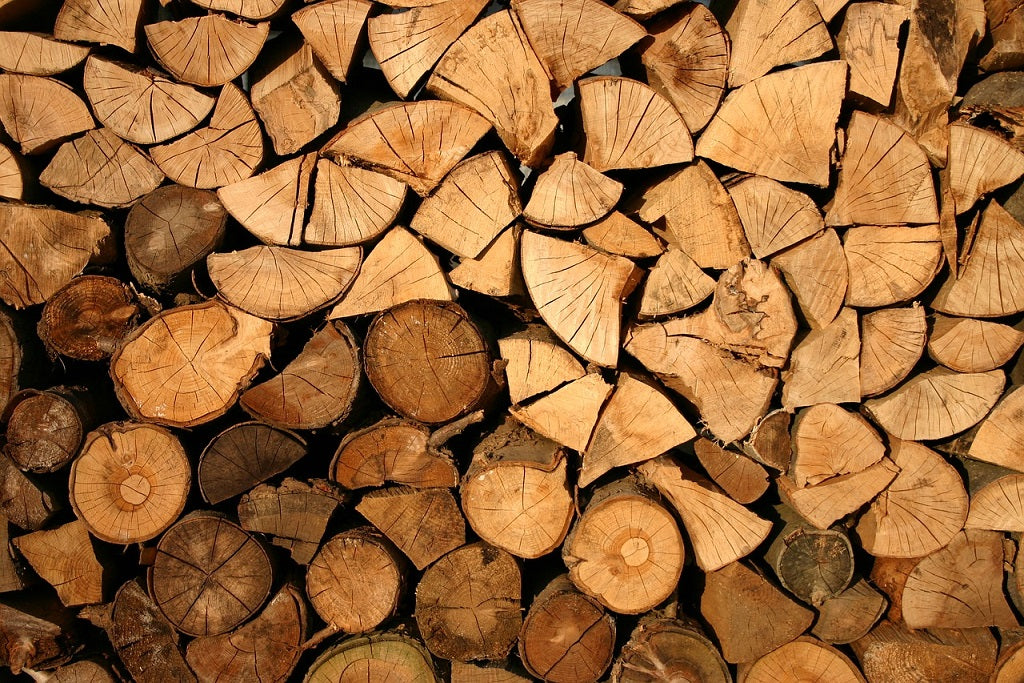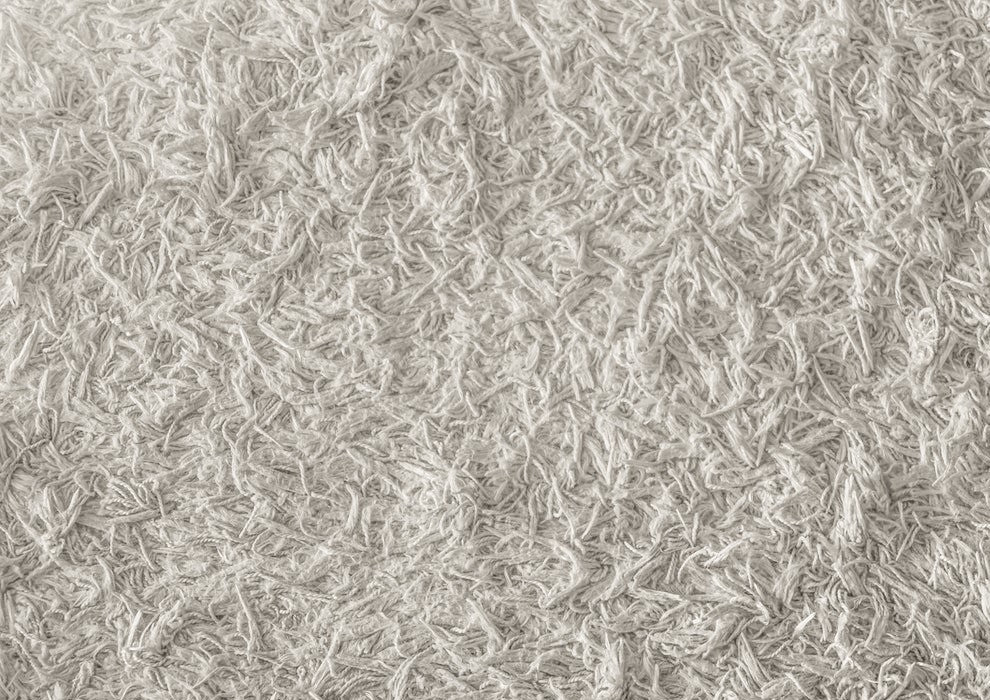What Is TENCEL™? (And Why We're Done With Cotton, For Good)
As awareness of the environmental issues surrounding the use of plastic-based synthetic fabrics increases, fabrics derived from natural fibres are becoming ever more popular with eco-conscious consumers.
As well as returning to traditional fabrics like cotton, linen and silk, sustainably-minded brands keen to keep up with their customers' demands are increasingly looking for new, innovative options with stronger environmental credentials.
One such option is lyocell - a relatively recent entrant to the fashion textiles marketplace made from cellulose fibres derived from wood pulp.
If you're thinking, "Wait, that sounds a bit like a fabric made out of trees...?"
...then you're absolutely right! (And we'll explain the process under which this incredible transformation happens below.)

There are various companies producing the fibres used to make lyocell fabrics, the largest and most renowned of which is Austrian manufacturer Lenzing AG, which produces under the protected brand name TENCEL™ (meaning that all TENCEL™ fabrics, including the ones used in our TENCEL™ Intimate collection, are created from fibres exclusively produced by Lenzing).
Or, in other words, to make things super clear:
Lyocell is the generic name of a cellulose fibre derived from pulped wood which is used in the production of fabrics, and
TENCEL™ is a brand name used by Lenzing AG to refer exclusively to the lyocell fibres they produce.
Throughout this blog post we'll refer more generally to 'lyocell', whilst taking the opportunity at appropriate points to explain why, for us, Lenzing TENCEL™ represents the cream of the lyocell crop!
So how exactly is lyocell made?
There are three key stages in the end-to-end process of the production of lyocell fabrics. Let's step through them, starting at the beginning...
From wood...
First of all, we need the natural raw material, and the source of this is of course trees! A range of different species can be used (in fact, theoretically, the wood of any tree could), but beech, spruce, birch, pine and eucalyptus are the most common.
Timber is cut and sent to pulping mills, which create chips from the timber and then chemically and mechanically treat those chips to produce what is referred to as 'dissolving pulp' - huge solidified rolls of wood pulp with a high cellulose content ready for the extraction of cellulose fibres.

More than half of the pulp Lenzing uses to produce lyocell fibres is actually produced in Lenzing's own plants, located in Austria and the Czech Republic. And most of the raw material used to create the pulp comes from forests in Austria (with a smaller proportion coming from other European countries).
Whether procured for pulping directly, or whether pulp is sourced from external producers, all of the wood used to create Lenzing's lyocell fibres is derived from controlled or certified and sustainably managed forests, with the wood itself certified according to recognized sustainability criteria, such as the FSC and PEFC standards.
...to fibres...
At the lyocell mill, cellulose fibres are extracted from the rolls of dissolving wood pulp via a process similar to the one used to make viscose and rayon fabrics.
This process first sees the wood pulp dissolved in an organic solvent called N-methylmorpholine N-oxide (NMMO). The resulting solution is pumped through spinnerets - apparatus looking a little like showerheads - forcing continuous strands of the cellulose fibres out. These strands are drawn out in the air to strengthen the bonds between the fibres, before being 'set' by washing out the solvent NMMO in a water bath.

From here, the strands are finished more or less the same way as those used to make many other kinds of fabric yarns, through various fun sounding mechanical stages, including detangling, crimping, carding (combing) and, finally, spinning.
Before we go any further, there are a couple of important differences between the lyocell process and the viscose process worth highlighting.
Firstly, the lyocell process uses less water and less energy than the viscose process, partly because it requires fewer stages to complete. Secondly, and even more importantly, the NMMO solvent used in the lyocell process is of much lower toxicity than the chemicals commonly used in the viscose process, which means it is safer to work with and less of a threat to the outside environment.
Lenzing's lyocell process offers even more: the company has developed a patented closed-loop system which recycles all of the water used throughout the process, as well as over 99% of the chemicals used. Although some viscose manufacturers also use closed-loop processes (including the company producing the bamboo jersey fabric used in our Bamboo collection), many still don't, allowing untreated process water, harmful gases and some of the toxic solvents used in their processes to escape, polluting the air, land and water.
...to fabric...
From here, the finished and spun lyocell yarns can be used by fabric manufacturers to produce a diverse range of materials: from soft, lightweight and breathable fabrics ideal for underwear and casualwear; through to strong, heavyweight and durable fabrics suitable for workwear.
As far as Lenzing is concerned, quality assurance doesn't end with the dispatch of their fibres to their customers the fabric manufacturers. Those manufacturers, as well as the downstream garment producers and retailers, wanting to use the TENCEL™ brand when marketing their products must apply for product certification. Under their certification programme, Lenzing's laboratories test the quality of hundreds of samples provided by fabric manufacturers each week, and verify that the fabrics that garment producers are using are sourced from certified manufacturers.
This means that when you buy a TENCEL™ branded lyocell garment, you can be sure that the fabric the garment is made from has been certified by Lenzing as having been produced from their own fibres.

What are the characteristics of lyocell fabrics?
As we've described, lyocell fibres can be used to produce a diverse range of fabrics with quite different aesthetic characteristics and physical attributes. But the fibres themselves carry certain very useful natural properties.
Thanks to their naturally smooth surface, lyocell fibres are renowned for their comfort and gentleness on the skin, whilst also displaying great strength and durability.
The structure of the fibres contributes to exceptionally high breathability, and the fibres themselves absorb moisture even more efficiently than cotton, helping keep skin feeling cool and dry.
This makes lyocell fibres a perfect substitute for cotton in all types of clothing, including underwear.
(We have a page detailing all you could ever want to know about the TENCEL™ Lyocell fibres used in our TENCEL™ Intimate collection here.)
What are the environmental benefits of lyocell?
Lyocell has been touted as amongst the most eco-friendly of all virgin fabrics.
First of all, the raw material used to produce it derives from organic and renewable sources, and doesn't require pesticides, herbicides, fertilizers or irrigation. This is already a strong start!
As the wood pulp used is processed via a low energy, low water-use system (and a closed loop system in the case of TENCEL™), the production of lyocell is also one of the cleanest and safest processes in yarn manufacturing.
Then there's the high durability of lyocell fabrics, which offers the garments it is used to produce both lower wear-and-tear and greater longevity.

Finally, there's end-of-life to consider, and this is where we learn another exciting property of lyocell: it is biodegradable and compostable, meaning that when garments finally do perish, the lyocell fibres used to create them can fully return to nature.
How does that compare with cotton?
We've already discussed how the natural attributes of lyocell fibres make them a perfect substitute for cotton in clothing textiles. But when sustainability is factored into the equation, there is no comparison: this is where lyocell blows cotton out of the water.
We've written in the blog previously about the inherent issues with cotton production, from its insatiable use of water; to the run-off of pesticides, herbicides and fertilizers contaminating the water table; to soil erosion and degradation; to ecological problems with industrial monoculture; to its typically huge transport footprint. (Phew!)

Organic farming has helped address some of these problems, to some extent; but its important to remember that certified organic cotton still only accounts for less than 1% of all cotton grown and there is thought to be more 'organic' cotton sold in the fashion marketplace than is actually produced...
What's more, even the most efficient organic farming practices don't satisfactorily address the absolutely critical issue of water use.
Beyond a reasonable drought
Freshwater availability has been linked to 9 out of 10 of the worst global risks to humankind, with a quarter of the world already facing a water crisis. This includes the population of the planet's heaviest cotton producer, India.
In of itself, the organic production of cotton has also created its own problems: as organic yields are lower, the practice of organic cotton farming is even more land-intensive than than non-organic farming, potentially exacerbating those habitat and biodiversity issues associated with industrial monocultures.

The end-to-end production of lyocell, on the other hand, is much less water intensive than the production of even organic cotton, using up to 50% less water by weight.
Lyocell also requires less energy to produce than organic cotton, creates fewer CO2 emissions, and is stronger and more durable. It's superior breathability also means that lyocell garments typically need to be washed less frequently than cotton garments.
Why we're transitioning from bamboo jersey to TENCEL™
The environmental issues associated with the production of cotton discussed above explain in large part why we decided to choose bamboo jersey rather than organic cotton when we designed the MONA, DAISY and ZOEY lines originally forming our Bamboo collection.
We're still in love with our bamboo jersey fabric, because it's another great substitute for cotton - like lyocell, it's lightweight, soft, and highly breathable. The raw bamboo used to create the fabric is also certified organically and sustainably grown; and, like TENCEL™, is closed-loop processed, keeping the solvents used in the production of the viscose fibres safely away from the outside environment.
So why have we taken the decision to begin the transition from bamboo jersey to TENCEL™? There are two primary reasons:
Firstly, there is the difference in the end-to-end transport footprints of the two fabrics. Although the raw material used to produce our bamboo jersey is grown and processed in China, it then needs to travel around the globe to us. Whereas the bulk of Lenzing's lyocell is sourced from wood harvested in Europe and processed in Europe, before being dispatched to our fabric manufacturer based right here in Portugal.
We're also very impressed with Lenzing's careful commitments to sustainable, safe and responsible production throughout their own end-to-end process, and beyond.
Introducing our TENCEL™ Intimate collection
This spring, we were proud to launch our first products made with TENCEL™ Lyocell fibres in our TENCEL™ Intimate collection.
The collection currently features four mix and match bra and knickers sets, designed for ultimate comfort and effortless style, and all available in two colours - a classic jet black and a warm and bright sunrise orange. Check them out and let us know your thoughts. We hope you love them as much as we do!
We have further TENCEL™ Intimate releases planned for a little later in the year, so keep your eyes peeled for those (or even better, sign up to our mailing list to ensure you get a timely heads up, as well as exclusive early access!).
As always, thanks for reading. We hope you've enjoyed the post and that we've helped answer some of your questions about this exciting new addition to the ColieCo fabric catalogue!
Nicole x


